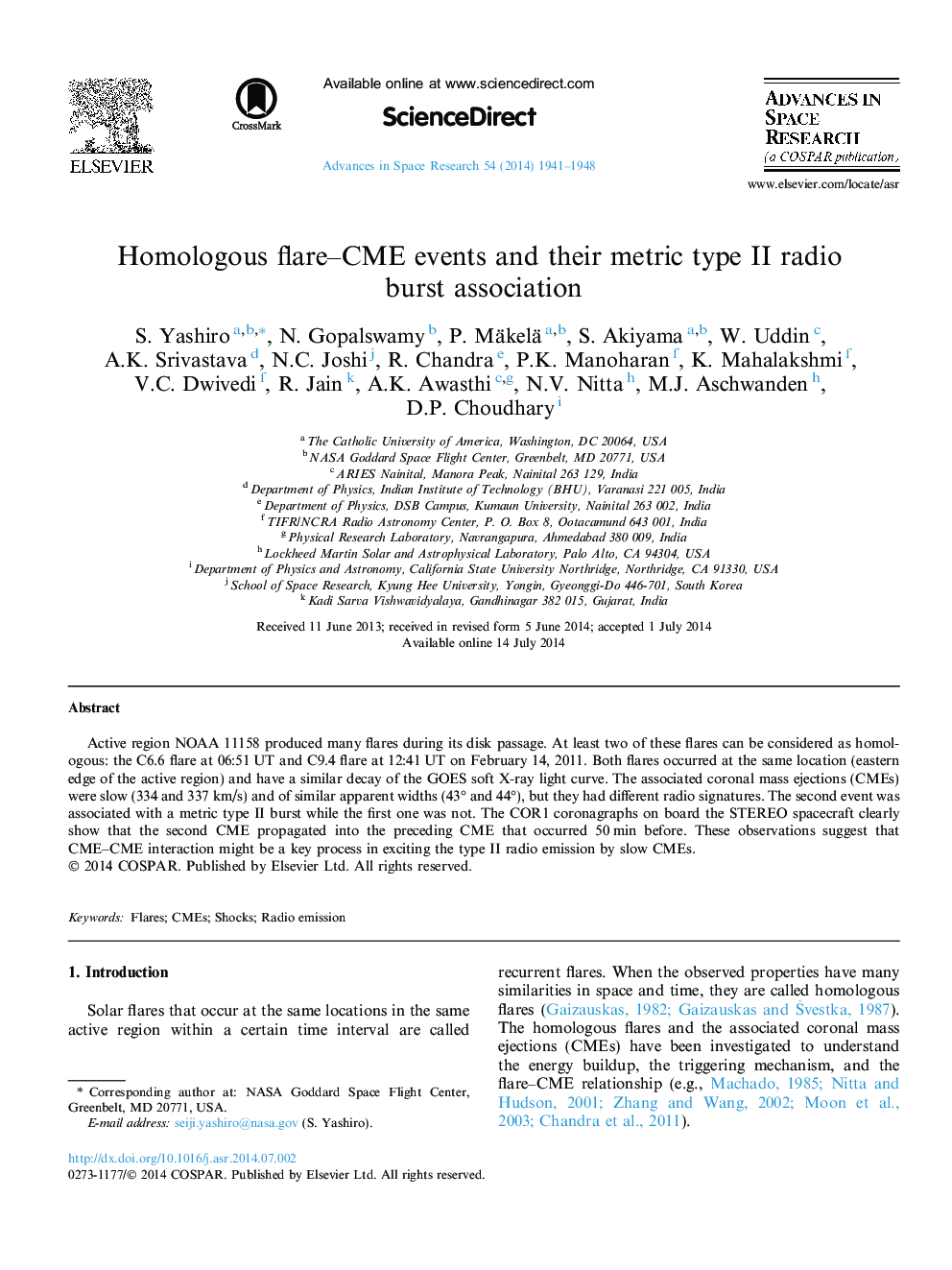| Article ID | Journal | Published Year | Pages | File Type |
|---|---|---|---|---|
| 1763857 | Advances in Space Research | 2014 | 8 Pages |
Active region NOAA 11158 produced many flares during its disk passage. At least two of these flares can be considered as homologous: the C6.6 flare at 06:51 UT and C9.4 flare at 12:41 UT on February 14, 2011. Both flares occurred at the same location (eastern edge of the active region) and have a similar decay of the GOES soft X-ray light curve. The associated coronal mass ejections (CMEs) were slow (334 and 337 km/s) and of similar apparent widths (43° and 44°), but they had different radio signatures. The second event was associated with a metric type II burst while the first one was not. The COR1 coronagraphs on board the STEREO spacecraft clearly show that the second CME propagated into the preceding CME that occurred 50 min before. These observations suggest that CME–CME interaction might be a key process in exciting the type II radio emission by slow CMEs.
